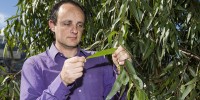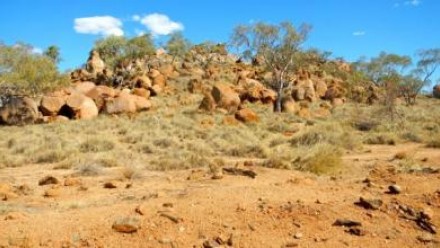Moritz Group - Evolutionary biogeography & conservation
The Moritz Group focuses on evolutionary biogeography and conservation: biodiversity discovery and conservation; biogeography and speciation; biological responses to climate change.
Biodiversity discovery & conservation
The majority of species remain to be discovered, yet habitats are being lost of affected by global change at an ever increasing rate. New tools from genomics, phylogenetics and spatial environmental analysis are revolutionizing our ability to discover diversity and map hotspots of unique species- or phylo-diversity. Building on previous studies of rainforests in eastern Australia and Brazil, and in California, our lab has turned its attention to the monsoonal tropics of Australia - perhaps the largest ecologically intact tropical savanna on the planet, and also a frontier for biodiversity discovery. Through a combination of field work, genomics, phenotyping and novel spatial analyses we have discovered species and hotspots of diversity new to science and this is now informing conservation strategies by agencies and NGOs. In ongoing work, we aim to better understand the evolutionary processes that generated this diversity and how this knowledge can inform conservation under rapid environmental change.
Biological responses to climate change
Though existing species have persisted through multiple episodes of climate change in the past, we are entering a new phase of rapid, human-caused climate change with no analogue in the recent geological past. Understanding how species respond by migration or adaptation is key to finding strategies to promote persistence of biodiversity. Our lab studies this through a combination of comparative studies of phenotypic and genomic diversity in across environments in space and time. One potential solution is to identify long-term climatic refugia across the landscape - also likely centers of local diversity and seek to protect these and habitat linkages to them.
Diversity and conservation of Australian marsupials
Australia hosts a globally unique radiation of marsupial mammals, many of which are strongly impacted by invasive species and habitat alteration. We are using genomics and advanced statistical methods to understand species boundaries and relationships across the entire radiation. For species now restricted to islands, we are investing divergence history and genetic erosion in remnant populations that are also the source for translocations to fenced areas on the mainland.
FRT Scholar
CBA Centre Administrator
EBL Manager
Group Leader
Postdoctoral Fellow
Honorary Professor
Honorary Lecturer
Honorary Associate Professor
Divisional Visitors
 Mozes Blom
Mozes Blom Jason Bragg
Jason Bragg Charlotte Drury
Charlotte Drury Ching Ching Lau
Ching Ching Lau Anna MacDonald
Anna MacDonald Sally Potter
Sally Potter Audrey Prasetya
Audrey Prasetya Emily Roycroft
Emily Roycroft Rhiannon Schembri
Rhiannon Schembri
PhD Students
Selected publications
- Fujita, M. K., J. A. McGuire, S. C. Donnellan, & C. Moritz (2010): “Diversification & persistence at the arid-monsoonal interface: Australia-wide biogeography of the Bynoe’s gecko (Heteronotia binoei; Gekkonidae).” Evolution 64:2293-2314
- Bell, R.C., J. L. Parra, M. Tonione, C. Hoskin, J. B. MacKenzie, S. E. Williams & C. Moritz (2010): “Patterns of persistence & isolation indicate resilience to climate change in montane rainforest lizards.” Molecular Ecology, 19 (12): 2531-2544.
- Moritz C., C. J. Hoskins, J. B. MacKenzie, B. L. Phillips, M. Tonione, N. Silva, J. VanDerWal, S. E. Williams, & C. H. Graham (2009): “Identification & dynamics of a cryptic suture zone in tropical rainforest.” Proceedings of the Royal Society of London Series B Biological Sciences 276: 11235-1244.
- Carnaval, A.C., M. J. Hickerson, C. F. B. Haddad, M. Rodrigues & C. Moritz (2009): “Stability predicts genetic diversity in the Brazilian Atlantic forest hotspot.” Science 323: 785-789
- Moritz, Craig, J. L. Patton, C. J. Conroy, J. L. Parra, G. C. White, & S. R. Beissinger (2008): “Impact of a century of climate change on small-mammal communities in Yosemite National Park, USA.” Science 322: 261-264.
- Graham, C. H., C. Moritz & S. E. Williams (2006). "Habitat history improves prediction of biodiversity in rainforest fauna." Proceedings of the National Academy of Sciences of the United States of America 103: 632-636
- Hoskin, C. J., M. Higgie K. R. McDonald & C. Moritz (2005). "Reinforcement drives rapid allopatric speciation." Nature (London) 437: 1353-1356.
- Hugall, A., Craig Moritz, A. Moussalli & J. Stanisic (2002). "Reconciling paleodistribution models & comparative phylogeography in the Wet Tropics rainforest land snail Gnarosophia bellendenkerensis (Brazier 1875)." Proceedings of the National Academy of Sciences of the United States of America 99: 6112-6117.
- Moritz, Craig (2002). "Strategies to protect biological diversity & the evolutionary processes that sustain it." Systematic Biology 51: 238-254.
- Moritz, C. (1994). "Defining 'evolutionary significant units' for conservation." Trends in Ecology and Evolution 9(10): 373-375.
- Moritz, C. & W. M. Brown (1987). "Tandem Duplications in Animal Mitochondrial DNA Species Variation in Incidence & Gene Content among Lizards." Proceedings of the National Academy of Sciences of the United States of America 84(20): 7183-7187.
- Moritz, C. (1983). "Parthenogenesis in the Endemic Australian Lizard Heteronotia binoei Gekkonidae." Science (Washington D C) 220(4598): 735-737

We discovered two new Australian native mammals – the first of their kind this century
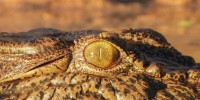
A croc’s life: below the surface, there’s more than meets the eye

Study maps plan to save native rodent from extinction
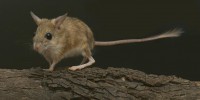
‘Impressive rafting skills’: the 8-million-year old origin story of how rodents colonised Australia

Shock find brings extinct mouse back from the dead

This adorable mouse was considered extinct for over 100 years — until we found it hiding in plain sight
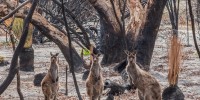
The government’s idea of ‘national environment standards’ would entrench Australia’s global pariah status

David Duchêne

From Canberra to Munich
